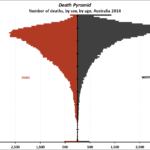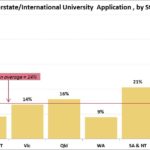Re-saucing the budget
In light of the weekend of indignation experienced across the globe, I thought I would share a couple of strategies which helped me cut kitchen costs during my student years.
Fortunately for me, living in Australia made student life easier than in most other countries. Centrelink ensured I had enough bacon on the table to last me till Hanukkah, but it certainly helped to be fiscally conservative in the kitchen, while being alcoholically liberal outside it.
Some financial facilitators were quite well known across the cheapskate community, like the closing time sales. Following suit from markets places around the world, Woolies regularly discounted their perishable items 5-10 minutes before closing time. This meant you could pick up a loaf of bread and 500grams of mince for a total of $1 (about $1.45 in A$2011). I’m sure other perishables were also discounted, but once my trolley had meat and carbos, I hardly saw the point in sticking around. When the butcher didn’t feel like handing out student aid, I often resorted to 1kg packets of no-frills-branded frozen burger patties, which went for about the same price. This was the beginning of my on-again off-again love affair with frozen foods. Together with rice, 2-minute noodles and the occasional pizza run, these made up the majority of my dietary intake.
Over the years, to the amazement of some, I stopped ‘attending’ Woolies at 8.55pm. Although I still look for bargains and sale stickers, I eventually started paying full price for meat. There is, however, one habit I picked up which took much longer to let go of. Until my mid-twenties, my cooking was characterised mostly by the lack of effort and dollars spent on it. These two features of my ‘cooking’ helped me develop sauce-infused pasta.
This simple but effective method diminished work and cost by more than 50%. Pasta (be it spaghetti, penne, tagliatelle, etc), being the cheaper and less arduous half of the meal, as well as possibly the most filling, is too boring by itself. The sauce, higher in nutritional value and flavour, is not only time consuming and messy, but also the most expensive part of the meal. When producing a dish, there is an ultimate ratio of pasta to sauce. Attempting to lower costs and effort, one is tempted to meddle with this ratio, but to no avail. As expected, increasing the pasta to sauce ratio (therefore decreasing cost and effort) renders the dish an insult to the entire Italian community. The ratio is not to be messed with.
As the experimenting continued, however, I found the right strategy to achieve my goals: eat the pasta, taste the sauce. After serving myself the perfectly ratio-ed dish, one where the sauce covers the noodles without drowning them, I proceeded to only eat the pasta, and leave the sauce behind. My visual and olfactory senses were tricked into believing I was consuming a full-flavoured meal, while my taste buds questioned the deceitful nature with which my student budget and lazy nature conspired against them. Once I ate the noodles, being the eternally growing lad that I am, I would refill my bowl with more pasta, recycling the sauce from my first serving. I now recognise these to be my first steps towards sustainable cooking, decreasing my meat intake from a wealthy Argentine to a middle class Italian in just under 10 years.
I have not run the figures, but I suspect this nifty strategy also saved me from washing hundreds of saucepans, and making many unnecessary late night market runs.
Seeing as it is a culture non-specific strategy, able to support stir-fries, curries, tagines and other carb-heavy dishes, I think perhaps I should float it by Centrelink’s multicultural division, and run a course on re-saucification. But if Centrelink doesn’t buy that, perhaps we could still push for the provision of simple budgeting training and services to be provided to those receiving benefits. Living within means can be tricky no matter what the budget is, but perhaps providing advice and information to help those whose ends won’t meet might help them change ends.
While teaching how to fish, perhaps we can also show where to buy half-price in the mean time.
















